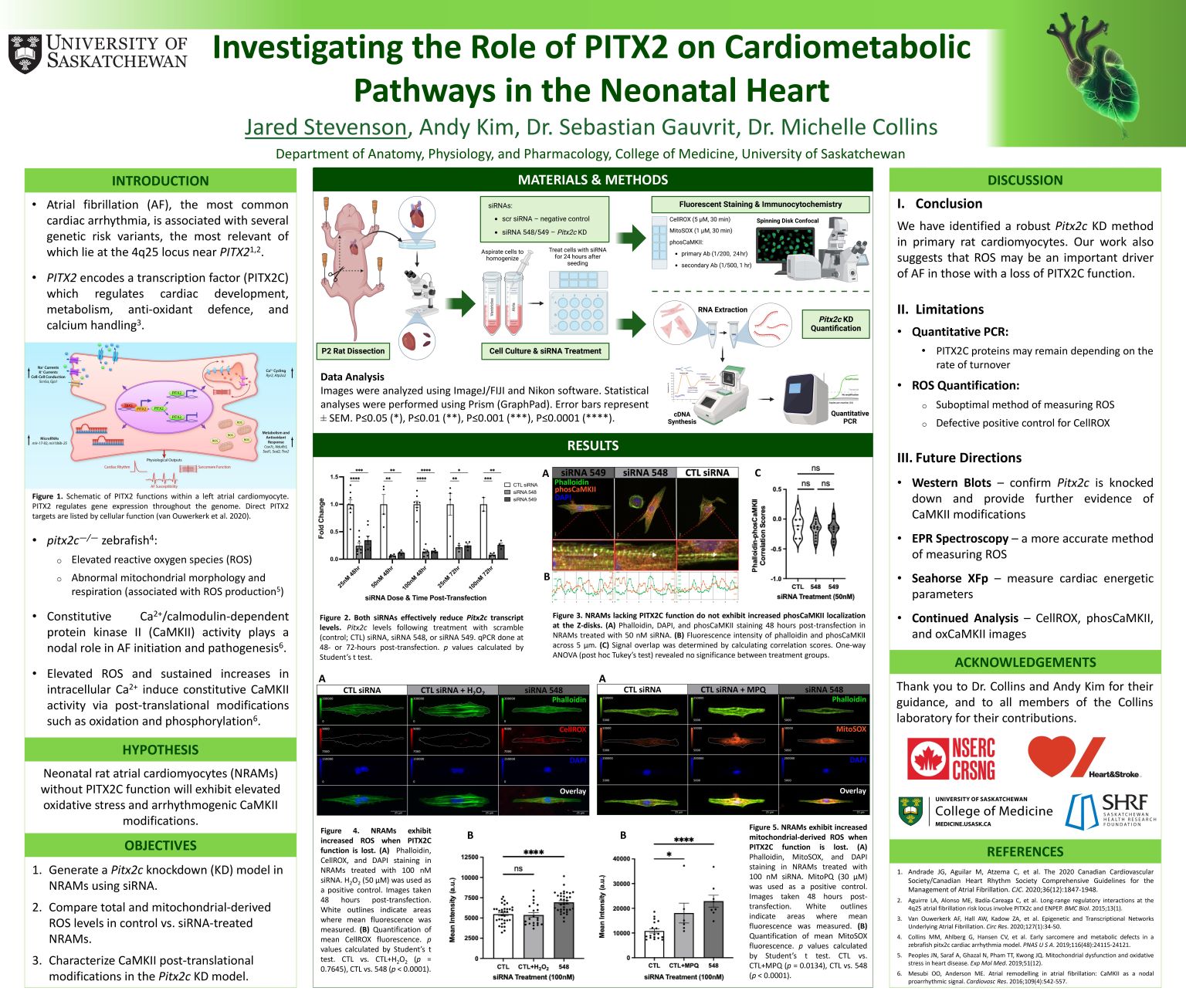
Investigating the Role of PITX2C on Cardiometabolic Pathways in the Neonatal Rat Heart
Jared Stevenson
INTRODUCTION: Atrial fibrillation (AF), the most common arrhythmia, is highly associated with genetic risk variants near the paired-like homeodomain transcription factor 2 (PITX2) gene. This transcription factor regulates cardiac development, metabolism, and calcium handling. It has been shown that loss of Pitx2c function in zebrafish increases oxidative stress, however, we do not know how this promotes arrhythmia. Therefore, we are exploring calcium/calmodulin-dependent protein kinase II (CaMKII) as a candidate pro-arrhythmic factor, as it plays a central role in AF initiation and pathogenesis and can be induced by increases in reactive oxygen species (ROS) and sustained increases in intracellular calcium.
HYPOTHESIS: We hypothesize that CaMKII is constitutively active in the absence of PITX2C function owing to increased ROS.
METHODS & RESULTS: We treated neonatal rat atrial cardiomyocytes (NRAMs) with siRNA to create a Pitx2c knockdown (KD) model. qPCR revealed a robust KD of Pitx2c. We observed increased CellROX staining in Pitx2c KD cells, indicating elevated ROS levels. Immunostaining of phosphorylated CaMKII, a modified version of CaMKII known to exhibit constitutive activity, revealed no difference between control and KD cells.
CONCLUSION: Thus far, we have identified an effective Pitx2c KD method and provided evidence of oxidative stress in cells lacking Pitx2c.
